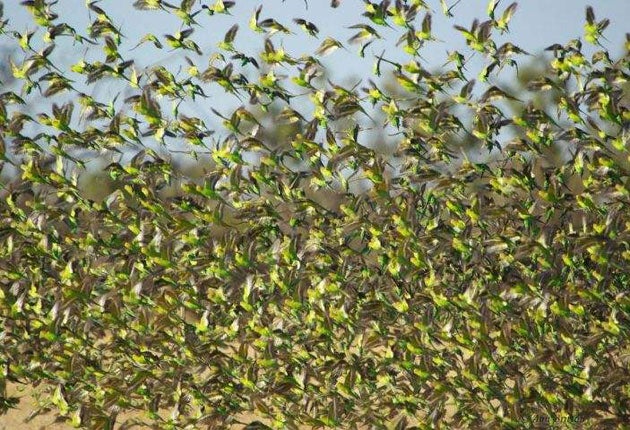The Flyway Code: How birds avoid crashing into each other in mid-air
‘Birds must have been under strong evolutionary pressure to establish basic rules and strategies to minimise the risk of collision in advance’

Scientists may have discovered why birds never seem to crash into one another – they appear to always veer to the right.
Just like cars drive on the right of the road in France or the US to avoid collisions, budgerigars were found to turn the same way when they find they are on a collision course.
Discovering the “basic rules” of safe flying that have evolved in birds over millions of years could help program drones to avoid collisions as the skies become more crowded.
Professor Mandyam Srinivasan, of Queensland University in Australia, who led the research, said: “Birds must have been under strong evolutionary pressure to establish basic rules and strategies to minimise the risk of collision in advance.
“But no previous studies have ever examined what happens when two birds fly towards each other.
“Our modelling has shown that birds always veer right – and sometimes they change their altitude as well, according to some pre-set preference.
“As air traffic becomes increasing busy, there is a pressing need for robust automatic systems for manned and unmanned aircraft, so there are real lessons to be learned from nature.”
In pictures: Starling murmurations in Britain
Show all 10Two budgies were released at opposite ends of a tunnel and their flight path was filmed by a high-speed camera.
In more than 100 flights by 10 different birds, there was not a single crash.
“Another finding was that birds would rarely fly at the same height, and this raises the question of whether individual birds have a specific preference for flying higher or lower,” Professor Srinivasan said.
“It might be that their position in the group hierarchy determines their flight height. This is a question for further research.
“While we can’t say how birds solve the problem of switching to different altitudes, we can propose some simple strategies for autopilot systems and unmanned aerials vehicles to prevent head-on collisions.”
The research, described in a paper in the PLOS One journal, was partly funded by Boeing Defence Australia.
Subscribe to Independent Premium to bookmark this article
Want to bookmark your favourite articles and stories to read or reference later? Start your Independent Premium subscription today.

Join our commenting forum
Join thought-provoking conversations, follow other Independent readers and see their replies